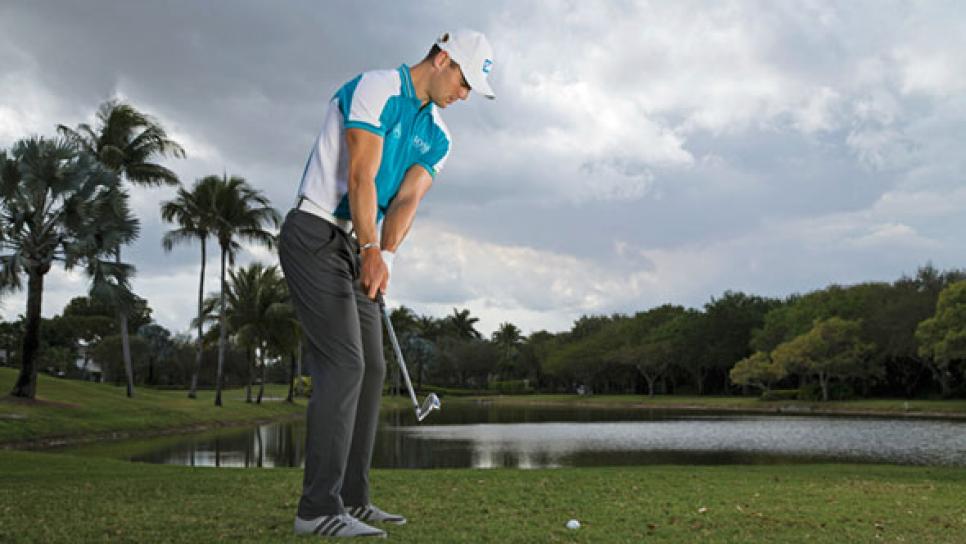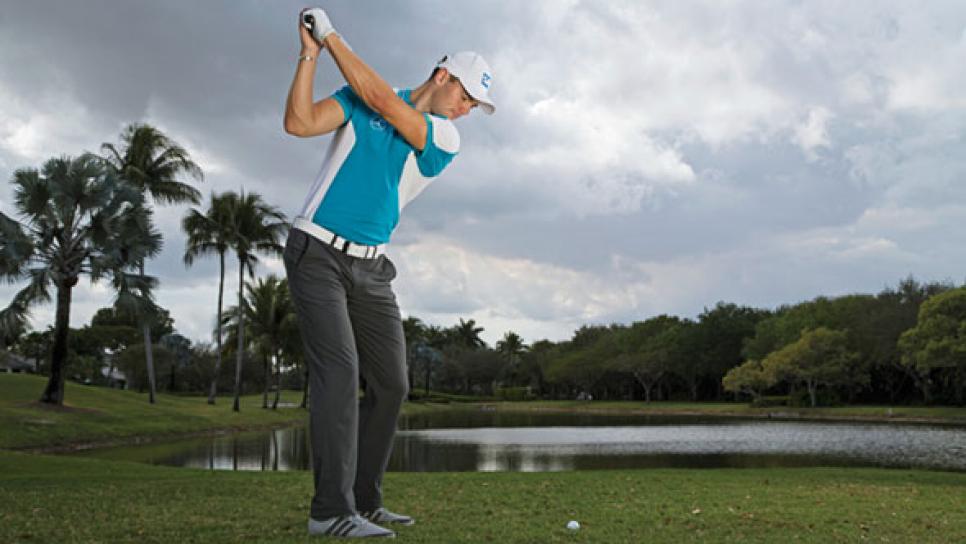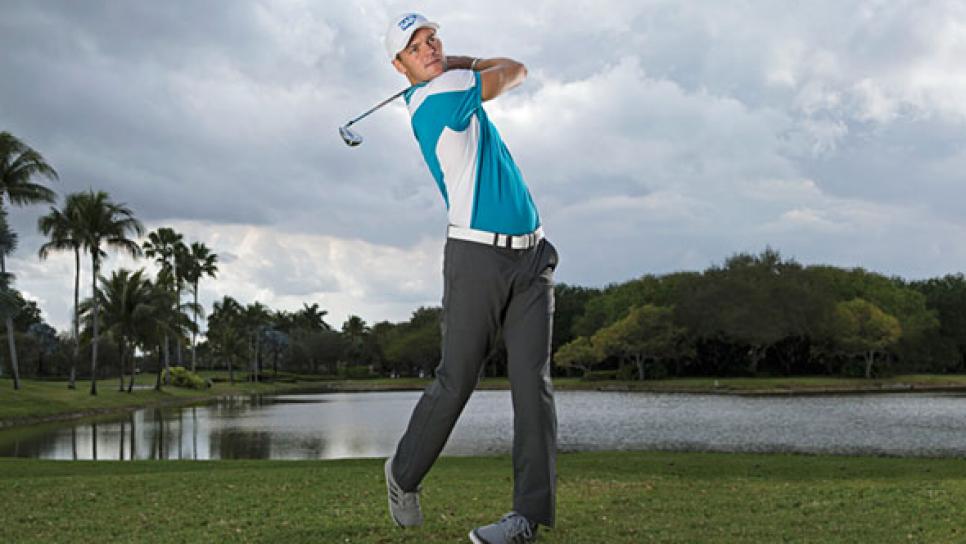Instruction
Find Your Feel

I don't think I've ever played the same iron shot twice, even on the range. Every shot has something new—a slight change in the lie, wind direction or how you feel over the ball. I'm German, but I'm not as technical as you might think. I'm a feel player. I'll hit a draw or fade, vary the spin, go high or low. I play the shot that "speaks to me" at the time.
A good example came during the third round of the U.S. Open last year. On the par-5 fifth hole, I drove it into one of Pinehurst's sandy areas. I had a downhill lie, 205 yards, with an opening to the green. I could have played the shot any number of ways but chose to hit it low and run it.
I went with my 7-iron and played the ball back in my stance. I hit it hard and watched it land 15 yards short and bounce up to five feet. I made the eagle putt, and the next day I won my second major.
To be a feel player, you must have some knowledge of swing basics but also mix in some personal instinct. I'll give you a few of the feels that work for me. Use them to improve your fundamentals and, ultimately, develop your own feels.

TO THE TOP:
ARMS TOGETHER, BIG TURN
I liken the first part of the swing to using a computer. If you put bad data in, bad data is going to come out. Likewise, if you program the backswing with good rhythm, mechanics and a proper sequence of motion, you'll set up a powerful downswing.
As I start the club back, I like to keep my forearms close together—that's a great sensation for me. When my arms feel unified, everything from the waist up moves back in sync. The other thing I think about on the backswing is turning my shoulders fully while making sure my arms and hands travel with them. Guard against swinging just your arms. I see that with a lot of amateurs: an arms-only backswing that leads to an over-the-top loop coming down. It's a classic case of bad data in, bad data out.
A coordinated move with the arms and shoulders going back will engage your hips, core and lower body. Then you're ready to start back toward the ball.

RANGE TIP
On tour, we know how far we hit each of our irons. You should, too. Grab a distance finder, go to your range and pick a target that allows you to get a good read on carry distance. You'll make better club selections and swing with more confidence.

TO THE FINISH
HIT DOWN AND THROUGH
The most basic aspect of iron play is to hit down on the ball. How much you hit down depends on the lie, the club you're using, and how much spin you want to apply. But whether you're hitting down slightly with a low iron or more steeply with a short iron, the key is to do it naturally, by letting the ball get in the way of the clubhead as it moves on its natural arc through the ball.
There's a zone, about 10 inches before impact and 10 inches after, where everything you did earlier in the swing takes over and determines impact. What happens within that zone occurs so fast, you can't rely on adjustments. My key as I swing through the ball is, "Keep the stomach down." It's more a sensation than a literal reflection of what happens. You want to rotate your hips and core level through the ball, no sliding, sagging or tilting. You don't want your hips to tip away from the target or push you out on your toes. Turn through, and you'll arrive at a good, balanced finish.

RANGE TIP
When I warm up before a round, I practice hitting deliberate hooks and slices to find out what shot shape feels best that day. Some days I have a clear preference, and I don't want to be fighting my instincts on the course. Warm up with a purpose.

